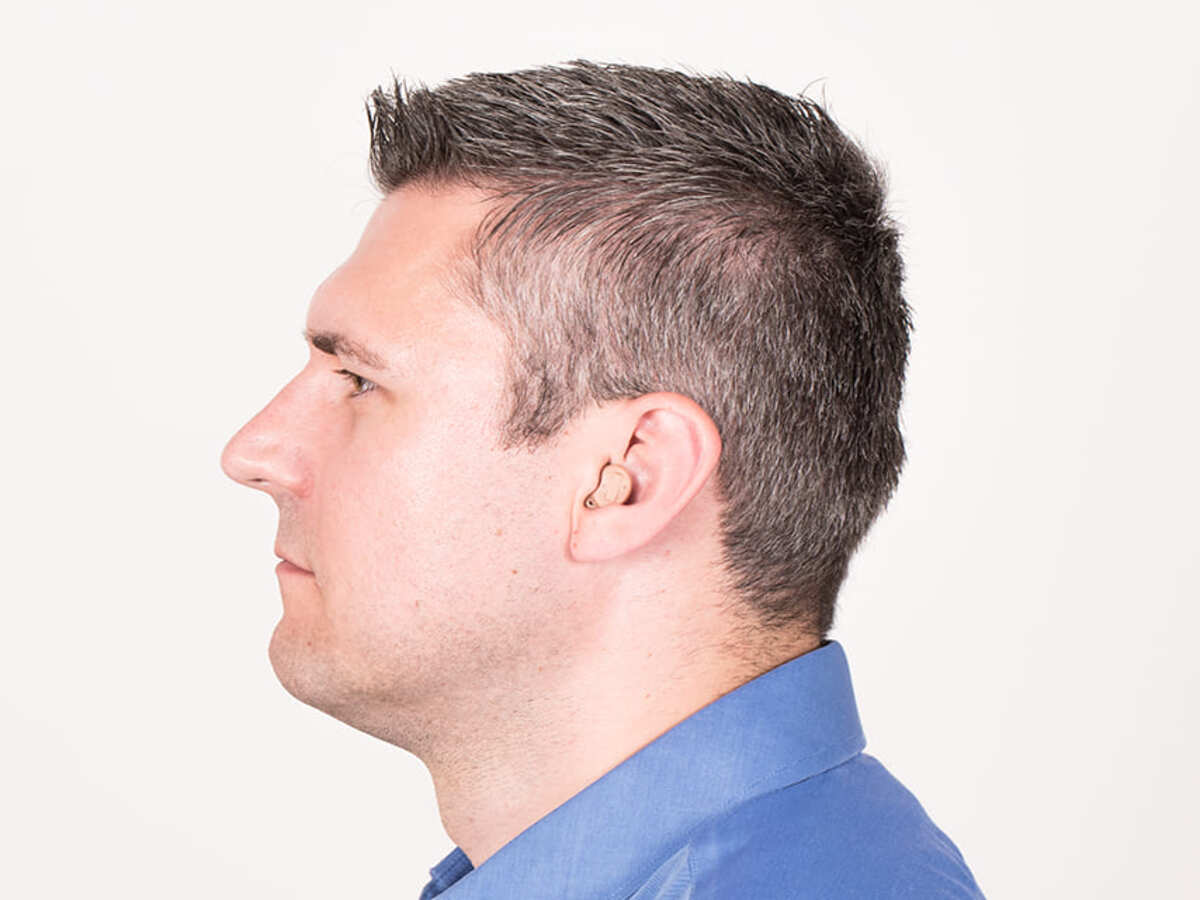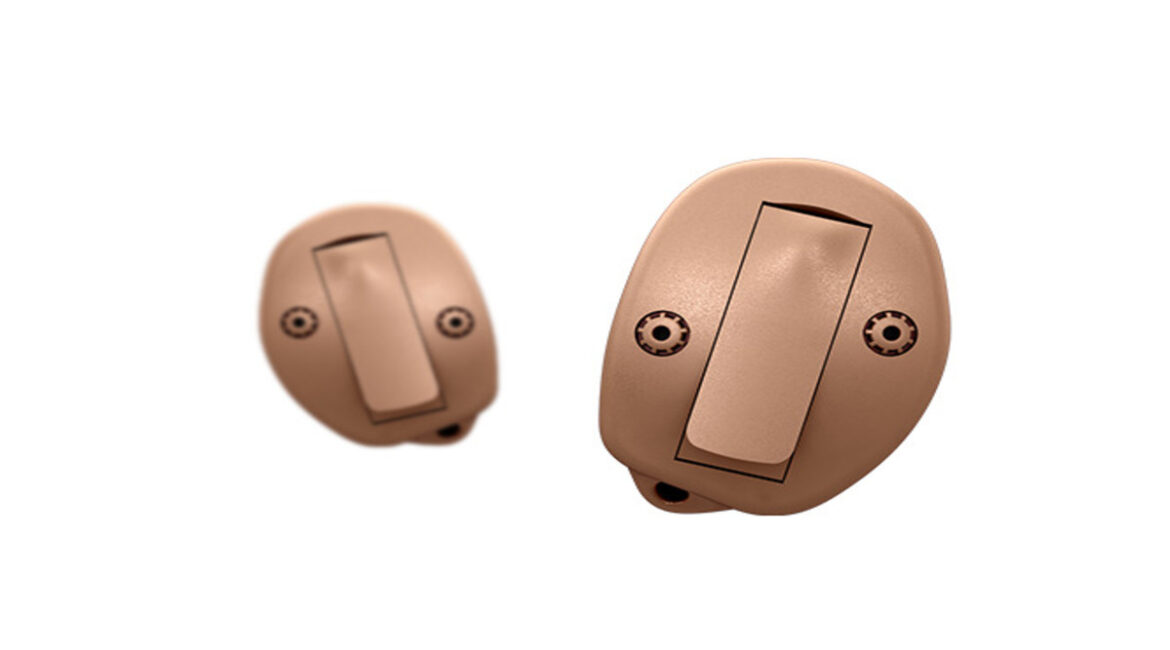Image via bernafon.com
In-The-Canal (ITC) are also called “half-shell” hearing aids. They resemble ITE (in-the-ear) hearing aids in appearance, but their primary distinction is that they are smaller and are fitted to the lower portion of the outer ear bowl, or the ear canal.
ITC hearing aids are one of the common hearing aid styles that are developed and made to order for a specific fit to your ears, just like ITE hearing aids. To guarantee an exact and cozy fit, a mold of each ear is taken. People who choose ITC hearing aids over ITE types do so because of their lower size.
What Are In the Canal Hearing Aids
The size of In-the-Canal (ITC) hearing aids is larger than that of Completely-in-Canal and Invisible hearing aids, but they can accommodate a wider range of hearing deficits and has longer battery life. In general, they aid the wearer in having clear hearing even in noisy situations. They can be customized by using the functionality of manual volume control, if necessary.
These specialized hearing aids are designed to comfortably rest just outside the ear canal. It can still be aesthetically pleasing and mix well with one’s skin tone if it is a decent tone of color. Additionally, it is the discreet hearing aids that are cozy to wear.
The Difference Between ITC and ITE Hearing Aids
There are several significant distinctions between an ITE and ITC hearing aid, despite the fact that both items are worn within the ear and provide similar sound amplification characteristics.
Compared to an ITC, an ITE is bigger and more functional. They are thought to be simpler to use because they are simple to put in and remove out of the ear. It may be more challenging for people with small canals to wear ITCs because of where they sit within the canal.
Both devices are for people with mild to moderate hearing loss, but because of how it is positioned, an ITC will have less wind noise. An ITC is thought to be slightly more potent than an ITE.
ITCs and ITEs are often the best options for people with mild to moderate hearing loss. Both of them are made specifically for the wearer’s ears by an audiologist. They are also quiet and comfortable.
Who Is a Good Candidate for ITC Hearing Aids
For wearers who have mild, moderate, or severe hearing loss, it is quite suitable.
The ITC hearing aid is very adaptable because of its size, which enables a variety of add-on possibilities. Simply select the features that you want your hearing aid to have from the available options.
You need to consult an audiologist to suggest a suitable hearing aid. Because there is rarely a one-size-fits-all solution, it is crucial that you have your hearing tested first and seek professional advice on the kind of hearing aid that is best for you.
Cost of ITC Hearing Aids
One ITC hearing aid can cost anywhere from $650 to $7,000, depending on the technologies involved. You can contact us to learn more about the pricing.
How to Care For Your New ITC Hearing Aids

Image via bernafon.com
It’s critical to regularly clean and cares for your hearing aid. Your hearing aid will need to be sent in for repairs less frequently the better you take care of it. The daily actions you may do to keep your hearing aid in good working order are listed below.
Checklist for daily hearing aid maintenance
- Utilize a battery tester to check the battery. Replace the old battery with a new one as soon as possible if it is dead or not functioning at all. If you keep old batteries in your hearing aid, corrosion will develop and your hearing aid may cease functioning. You should always carry additional batteries since you never know when the one in your hearing aids will run out.
- Look for debris in the hearing aid’s apertures (dirt, wax). The ports and vents for the microphone and receiver are also included. Use the wax loop tool to gently sweep away the debris. Avoid pushing the wax loop in too far because doing so could force the debris in deeper and harm the hearing aid.
- Look for fractures or exposed wires in the hearing aid case. Please notify your audiologist if you see any damage to the hearing aid case.
- Check any broken or easy-to-move dials and switches. The program toggle switch, or telecoil, is one of the dials and switches (not all hearing aids will have extra dials or switches). Tell your audiologist if there are any dial or switch issues.
- Check the sound quality using the provided hearing aid stethoscope. To ensure that your hearing aids are functioning properly, you should test them every day by listening to them. Without any static or distortion, the audio should be clean and crisp. Say the sounds “oo,” “ee,” “ah,” “sh,” “s,” and “f” once the hearing aid stethoscope is fastened to the device. Are they obvious? Check the volume control as well (not available on all hearing aids). Check the sound quality and the hearing aid’s functionality by moving it up and down.
Keeping your hearing aids clean
As directed, clean your hearing aid. Utilize a dry, gentle towel to wipe the case. Keep your hearing aid dry! Utilizing the wax loop tool, gently remove any dirt from the hearing aid apertures. Be careful not to press the wax loop in too much as this could harm the hearing aid.
Get the Best In the Canal Hearing Aids

Image via bernafon.com
For the majority of hearing loss levels, ITCs are advised. To find out what works for you, you must do your research and see our audiologist. These small hearing aids are so comfortable that their users frequently forget they are wearing two hearing aids.
Numerous factors can influence which hearing aid model and kind are best for you. It can be your lifestyle preferences, the severity of your hearing loss, or aesthetic considerations. Find out more information about ITC hearing aids by making an appointment with our J Glasses hearing aids in Singapore.
There are many types of hearing aids J Glasses is offering, contact us today to get your custom hearing aids.

